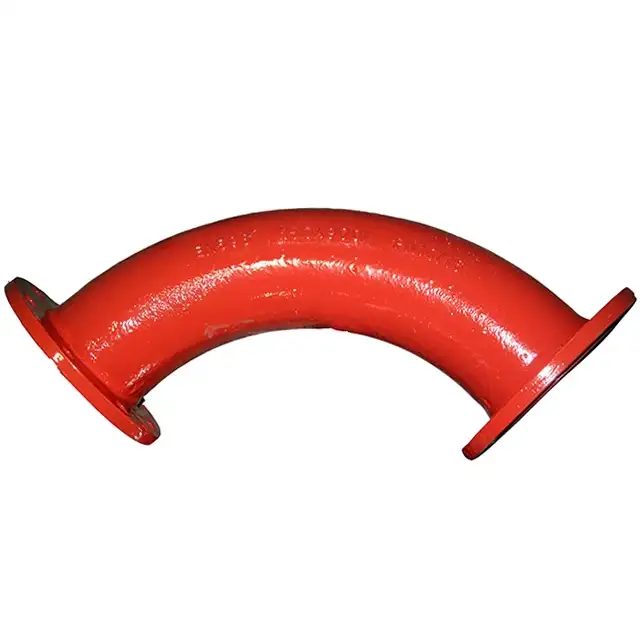FCD45 ductile iron, also known as nodular cast iron, is renowned for its excellent mechanical properties and versatility in various industrial applications. Characterized by its spheroidal graphite microstructure, FCD45 offers a unique combination of strength, ductility, and toughness, making it a preferred material in sectors ranging from automotive to construction. This article provides an in-depth exploration of FCD45 ductile iron, covering its composition, properties, manufacturing processes, applications, and more.

1. Chemical Composition and Microstructure of FCD45 Ductile Iron
FCD45 ductile iron’s superior properties stem from its precise chemical composition and unique microstructure.
Chemical Composition
The typical chemical composition of FCD45 ductile iron is as follows:
| Element | Percentage (%) |
|---|---|
| Carbon (C) | 3.3 – 3.8 |
| Silicon (Si) | 2.3 – 2.7 |
| Manganese (Mn) | 0.2 – 0.4 |
| Phosphorus (P) | ≤ 0.1 |
| Sulfur (S) | ≤ 0.01 |
| Magnesium (Mg) | 0.03 – 0.05 |
| Nickel (Ni) | 0.02 – 0.04 |
| Chromium (Cr) | < 0.03 |
| Molybdenum (Mo) | < 0.01 |
| Titanium (Ti) | < 0.05 |
This composition ensures a balance between strength and ductility, with magnesium playing a crucial role in forming the spheroidal graphite structure.
Microstructure
The microstructure of FCD45 is predominantly ferritic, with spheroidal graphite nodules uniformly distributed throughout the matrix. This structure imparts excellent ductility and impact resistance, distinguishing it from other cast irons with flake graphite structures.
2. Mechanical Properties and Performance Metrics
FCD45 ductile iron exhibits mechanical properties that make it suitable for components subjected to dynamic loads and stresses.
Mechanical Properties
| Property | Value |
|---|---|
| Tensile Strength | ≥ 450 MPa |
| Yield Strength | ≥ 280 MPa |
| Elongation | ≥ 10% |
| Hardness | ≤ 187 HB |
| Impact Resistance | High |
These properties ensure that FCD45 components can withstand significant mechanical stresses without failure.
Performance Metrics
FCD45’s performance is characterized by:
-
Fatigue Resistance: Suitable for cyclic loading conditions.
-
Wear Resistance: Adequate for applications involving friction.
-
Thermal Conductivity: Moderate, allowing for heat dissipation in certain applications.
3. Manufacturing Processes and Casting Techniques
The production of FCD45 ductile iron involves several critical steps to ensure the desired properties are achieved.
Melting and Alloying
High-quality pig iron is melted in induction furnaces, and alloying elements are added to achieve the specified chemical composition.
Inoculation and Nodulization
Magnesium is introduced to the molten iron to promote the formation of spheroidal graphite. Inoculants like ferrosilicon are added to enhance graphite formation and control the microstructure.
Casting Methods
Common casting techniques for FCD45 include:
-
Sand Casting: Versatile and cost-effective for various component sizes.
-
Shell Molding: Provides better surface finish and dimensional accuracy.
-
Investment Casting: Suitable for complex geometries and thin-walled components.
Heat Treatment
Post-casting heat treatments may be applied to refine the microstructure and enhance mechanical properties, depending on the application requirements.
4. Applications Across Industries
FCD45 ductile iron’s properties make it suitable for a wide range of applications:
Automotive Industry
-
Engine Components: Crankshafts, camshafts, and cylinder heads.
-
Suspension Parts: Control arms and steering knuckles.
Construction and Infrastructure
-
Pipes and Fittings: Water and sewage systems.
-
Manhole Covers: Due to their strength and durability.
Machinery and Equipment
-
Gears and Shafts: In industrial machinery.
-
Pump Housings: For various fluid handling applications.
Agricultural Equipment
-
Tractor Components: Axles and transmission parts.
-
Harvesting Machinery: Structural and moving parts.
5. Advantages of FCD45 Ductile Iron
FCD45 offers several benefits over other materials:
-
High Strength and Ductility: The spheroidal graphite structure provides superior mechanical properties.
-
Excellent Castability: It can be cast into complex shapes with relative ease.
-
Good Machinability: FCD45 can be machined efficiently, reducing manufacturing costs.
-
Cost-Effective: Compared to steel, FCD45 offers similar properties at a lower cost.
-
Corrosion Resistance: It exhibits better corrosion resistance than many other cast irons.
6. Comparison with Other Materials
| Property | FCD45 | Gray Cast Iron | Carbon Steel |
|---|---|---|---|
| Tensile Strength (MPa) | ≥ 450 | 200 – 300 | 400 – 600 |
| Elongation (%) | ≥ 10 | < 1 | 15 – 25 |
| Machinability | Excellent | Good | Moderate |
| Castability | Excellent | Excellent | Poor |
| Cost | Moderate | Low | High |
FCD45 bridges the gap between traditional cast iron and steel, offering a balance of strength, ductility, and cost-effectiveness.
7. Processing and Heat Treatment
FCD45 can undergo various heat treatments to enhance its properties:
-
Annealing: Improves machinability and reduces internal stresses.
-
Normalizing: Refines grain structure and enhances mechanical properties.
-
Quenching and Tempering: Increases hardness and strength for demanding applications.
Proper heat treatment can tailor FCD45’s properties to specific application requirements.
Frequently Asked Questions (FAQs)
Q1: What distinguishes FCD45 from other ductile iron grades?
A1: FCD45 is specified under JIS G5502 and is equivalent to ASTM A536 65-45-12. It offers a minimum tensile strength of 450 MPa and elongation of 10%, making it suitable for applications requiring a balance of strength and ductility.
Q2: Can FCD45 be welded?
A2: Yes, FCD45 can be welded using appropriate techniques. Preheating and post-weld heat treatment are recommended to prevent cracking and ensure joint integrity.
Q3: How does FCD45 perform in corrosive environments?
A3: FCD45 exhibits better corrosion resistance than gray cast iron due to its graphite structure. However, for highly corrosive environments, additional protective coatings or materials may be necessary.
References:
1. JIS G5502: Japanese Industrial Standard for Ductile Iron Castings
2. ASTM A536 – Standard Specification for Ductile Iron Castings
4. Cast Iron Standards – European Foundry Association (CAEF)
